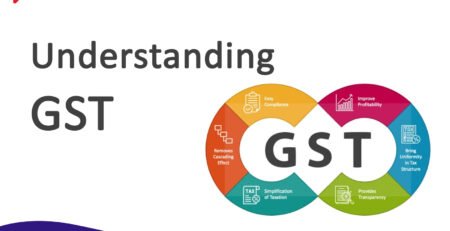The Generational Wealth Gap: Why One Income Can’t Buy What It Used to
Introduction: The American Dream Deferred
The stark contrast between generational economic realities has never been more apparent. Where previous generations could comfortably afford homeownership, raise multiple children, take annual vacations, and build substantial wealth on a single income, today’s families struggle to make ends meet despite having multiple income sources. This generational wealth gap represents one of the most significant economic challenges facing modern society.
The question “Where did we go wrong?” resonates with millions of Americans who find themselves working harder than their parents yet achieving less financial security. Understanding the complex factors behind this shift is crucial for addressing the systemic issues that have created this economic divide.
The Previous Generation’s Economic Landscape
Single Income, Multiple Assets
A generation ago, the typical American family operated on a fundamentally different economic model. The breadwinner’s income, often from manufacturing, skilled trades, or stable corporate employment, provided sufficient purchasing power to support:
- Homeownership: Houses were priced at 2-3 times annual household income
- Family size: Families averaged 3-4 children without significant financial strain
- Transportation: New cars were accessible and represented a smaller portion of household budgets
- Recreation: Annual vacations and leisure activities were standard middle-class expectations
- Savings: Regular contributions to savings accounts and pension plans were the norm
The Economic Framework That Enabled Prosperity
Several key factors created this environment of widespread prosperity:
Manufacturing Dominance: The post-World War II industrial boom provided well-paying jobs with benefits and job security. Manufacturing employment offered clear career progression paths and wages that kept pace with productivity gains.
Regulated Banking System: The Glass-Steagall Act and other financial regulations created a stable banking environment that prioritized long-term relationships over short-term profits.
Strong Union Presence: Labor unions represented approximately 35% of the workforce in the 1950s, ensuring wages kept pace with corporate profits and productivity increases.
Government Investment: Massive infrastructure projects, the GI Bill, and other government programs created economic opportunities and supported middle-class growth.
Today’s Economic Reality: The Struggle Despite Multiple Incomes
The New Normal: Working More, Earning Less
Modern families face a dramatically different economic landscape despite technological advances and increased productivity. According to the National Low Income Housing Coalition, the hourly wage needed to afford rent on a one-bedroom apartment in America is $23.67, more than three times the federal minimum wage.
Today’s typical household characteristics include:
- Multiple income sources: Both partners working full-time, plus gig economy participation
- Rental dependence: Homeownership rates have declined significantly, especially among younger generations
- Debt burden: Student loans, credit card debt, and other forms of consumer debt dominate household finances
- Reduced family size: Financial constraints limit family planning decisions
- Minimal savings: Emergency funds and retirement savings are luxuries many cannot afford
The Numbers Tell the Story
The generational wealth gap is quantifiable and stark. In the first quarter of 2024, 51.8 percent of the total wealth in the United States was owned by members of the baby boomer generation, while millennials owned around 9.4 percent of total wealth.
This disparity extends beyond simple age differences. Since 1989, the shift in wealth to older generations is clear, with the 70+ age group seeing their share of wealth increase while younger generations face unprecedented barriers to wealth accumulation.
Key Factors Behind the Generational Wealth Gap
1. Housing Affordability Crisis
The most significant factor contributing to the generational wealth gap is the housing affordability crisis. Over 76% of Americans are spending more than 31% of their gross monthly income on housing, with many spending even more, compounded by record home prices and historically low sales volumes.
Historical Context: In the 1970s, the median home price was approximately 2.5 times the median household income. Today, that ratio has increased to 5-7 times in many markets, making homeownership nearly impossible for many young families.
Wealth Building Impact: Homeownership has traditionally been the primary wealth-building vehicle for middle-class Americans. When this pathway is blocked, entire generations lose their primary means of accumulating assets.
2. Wage Stagnation and Productivity Disconnect
While productivity has increased dramatically over the past five decades, wages have not kept pace. Adjusted for inflation, today’s average hourly wage has about as much purchasing power as it did in 1978, with most wage increases going to the highest earners.
The Productivity-Pay Gap: From 1979 to 2018, worker productivity increased by 70%, while wages grew by only 12%. This disconnect means that workers are creating more value but not receiving proportional compensation.
Impact on Families: Stagnant wages combined with rising costs create a squeeze that forces families to seek multiple income sources just to maintain basic living standards.
3. Educational Costs and Student Debt
The cost of higher education has increased at rates far exceeding inflation, creating a generation burdened by student debt. This debt burden delays homeownership, family formation, and wealth accumulation.
Long-term Consequences: Student loan payments often persist for decades, preventing young adults from saving for down payments or investing in wealth-building activities during their prime earning years.
4. Healthcare and Benefit Erosion
Rising healthcare costs and the decline of employer-provided benefits have shifted financial responsibility to individuals. Previous generations enjoyed comprehensive health insurance and pension plans as standard employment benefits.
Modern Reality: Today’s workers face high-deductible health plans, reduced employer contributions, and the responsibility of funding their own retirement through 401(k) plans rather than defined benefit pensions.
5. Financialization of the Economy
The shift from a manufacturing-based economy to a finance-dominated system has created new forms of economic inequality. Financial instruments and investment strategies that were once reserved for the wealthy are now necessary for basic financial security.
Access Barriers: Complex financial markets favor those with existing wealth and sophisticated knowledge, creating barriers for average families trying to build wealth.
The Role of Policy and Systemic Changes
Deregulation and Its Consequences
The systematic deregulation of various industries since the 1980s has contributed to increased inequality:
Banking Deregulation: The repeal of Glass-Steagall and other banking regulations led to increased risk-taking and financial instability.
Labor Law Changes: Weakened labor protections and reduced union membership have decreased workers’ bargaining power.
Tax Policy Shifts: Changes in tax policy have disproportionately benefited high earners and wealth holders.
Monetary Policy Impact
Federal Reserve policies, while intended to stabilize the economy, have inadvertently contributed to asset inflation that benefits existing wealth holders while making assets less accessible to new buyers.
Regional Variations and Geographic Factors
The generational wealth gap varies significantly by geographic region:
High-Cost Urban Areas: Cities like San Francisco, New York, and Seattle show the most extreme gaps, where even high earners struggle with housing costs.
Rural and Rust Belt Regions: These areas face different challenges, including job losses, population decline, and reduced economic opportunities.
Sunbelt Growth: Some regions offer better opportunities for wealth building, but these are often offset by climate risks and infrastructure challenges.
The Psychological and Social Impact
Mental Health Consequences
The financial stress of the generational wealth gap has created significant mental health challenges:
Anxiety and Depression: Financial insecurity contributes to increased rates of anxiety and depression among younger generations.
Delayed Life Milestones: Financial constraints force delays in marriage, homeownership, and family formation, creating social and psychological stress.
Social Cohesion Erosion
Economic inequality threatens social cohesion and democratic institutions:
Political Polarization: Economic frustration contributes to political extremism and social division.
Reduced Social Mobility: The American Dream of upward mobility appears increasingly out of reach for many families.
Current Trends and Future Projections
Employment Market Evolution
The gig economy and remote work have created new opportunities but also new challenges:
Job Security: Traditional employment benefits and job security have been replaced by flexibility and uncertainty.
Skill Requirements: Rapid technological change requires continuous learning and adaptation, adding to financial and time pressures.
Demographic Changes
Aging populations and changing family structures will continue to impact wealth distribution:
Inheritance Patterns: The baby boomer generation’s wealth will eventually transfer to younger generations, but timing and distribution remain uncertain.
Family Formation: Lower birth rates and delayed family formation will have long-term economic consequences.
Potential Solutions and Policy Recommendations
Housing Policy Reform
Addressing the housing affordability crisis requires comprehensive policy changes:
Zoning Reform: Reducing restrictive zoning laws to increase housing supply.
Public Housing Investment: Expanding affordable housing programs and public housing options.
Down Payment Assistance: Programs to help first-time homebuyers overcome initial barriers.
Labor and Wage Policy
Strengthening worker protections and ensuring fair compensation:
Minimum Wage Increases: Adjusting minimum wages to reflect actual living costs.
Collective Bargaining: Strengthening workers’ rights to organize and negotiate.
Benefit Portability: Creating systems that allow workers to maintain benefits across different employers.
Educational and Training Support
Addressing the skills gap and educational debt burden:
Trade and Technical Education: Investing in alternatives to traditional four-year degrees.
Student Debt Relief: Comprehensive approaches to reducing the student debt burden.
Lifelong Learning: Supporting continuous education and skill development.
Financial System Reform
Creating a more equitable financial system:
Banking Regulation: Strengthening oversight of financial institutions.
Investment Access: Democratizing access to wealth-building investment opportunities.
Consumer Protection: Protecting consumers from predatory lending and financial exploitation.
The Path Forward: Rebuilding Economic Opportunity
Individual Strategies
While systemic changes are necessary, individuals can take steps to improve their financial situation:
Financial Education: Understanding basic financial principles and investment strategies.
Multiple Income Streams: Developing diverse income sources to increase financial security.
Geographic Mobility: Considering relocation to areas with better economic opportunities.
Skill Development: Continuously updating skills to remain competitive in the job market.
Community and Societal Action
Addressing the generational wealth gap requires collective action:
Political Engagement: Participating in democratic processes to advocate for policy changes.
Community Investment: Supporting local businesses and community development initiatives.
Education Advocacy: Promoting financial literacy and economic education.
Social Support: Building networks that provide mutual aid and support.
Conclusion: Recognizing the Challenge, Building Solutions
The generational wealth gap represents a fundamental shift in American economic reality. Where previous generations could achieve middle-class prosperity on a single income, today’s families struggle despite multiple income sources and higher levels of education. This change reflects systemic shifts in housing markets, labor relations, financial systems, and government policy.
Understanding these factors is the first step toward addressing the challenge. The solutions require coordinated action at individual, community, and policy levels. While the task is daunting, history shows that economic systems can be reformed to create more equitable outcomes.
The American Dream of homeownership, family formation, and economic security remains achievable, but it requires acknowledging the changed economic landscape and implementing policies that address the root causes of the generational wealth gap. Only through comprehensive reform can we ensure that future generations have the same opportunities for prosperity that previous generations enjoyed.












